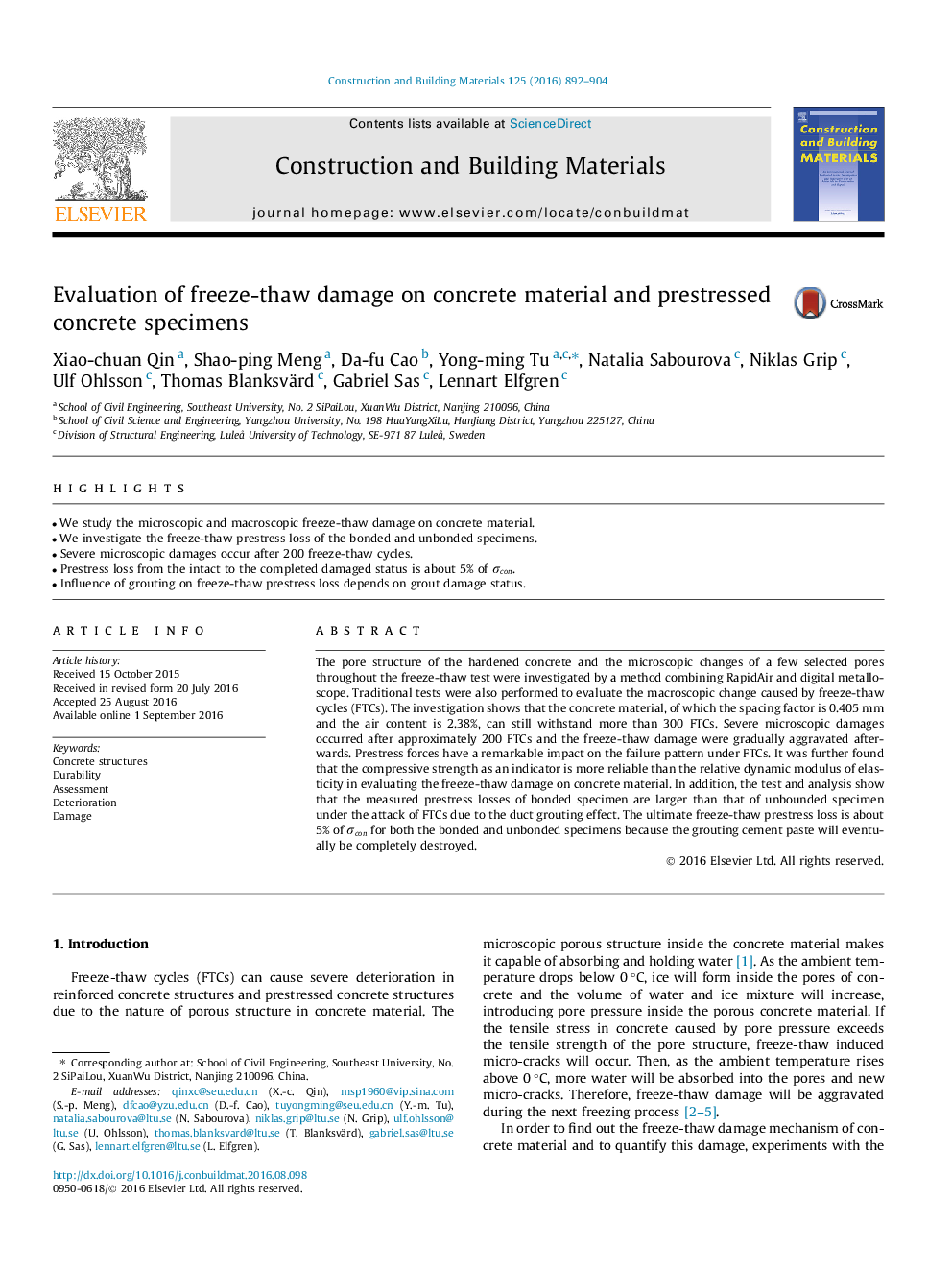| Article ID | Journal | Published Year | Pages | File Type |
|---|---|---|---|---|
| 4918676 | Construction and Building Materials | 2016 | 13 Pages |
Abstract
The pore structure of the hardened concrete and the microscopic changes of a few selected pores throughout the freeze-thaw test were investigated by a method combining RapidAir and digital metalloscope. Traditional tests were also performed to evaluate the macroscopic change caused by freeze-thaw cycles (FTCs). The investigation shows that the concrete material, of which the spacing factor is 0.405Â mm and the air content is 2.38%, can still withstand more than 300 FTCs. Severe microscopic damages occurred after approximately 200 FTCs and the freeze-thaw damage were gradually aggravated afterwards. Prestress forces have a remarkable impact on the failure pattern under FTCs. It was further found that the compressive strength as an indicator is more reliable than the relative dynamic modulus of elasticity in evaluating the freeze-thaw damage on concrete material. In addition, the test and analysis show that the measured prestress losses of bonded specimen are larger than that of unbounded specimen under the attack of FTCs due to the duct grouting effect. The ultimate freeze-thaw prestress loss is about 5% of Ïcon for both the bonded and unbonded specimens because the grouting cement paste will eventually be completely destroyed.
Related Topics
Physical Sciences and Engineering
Engineering
Civil and Structural Engineering
Authors
Xiao-chuan Qin, Shao-ping Meng, Da-fu Cao, Yong-ming Tu, Natalia Sabourova, Niklas Grip, Ulf Ohlsson, Thomas Blanksvärd, Gabriel Sas, Lennart Elfgren,
